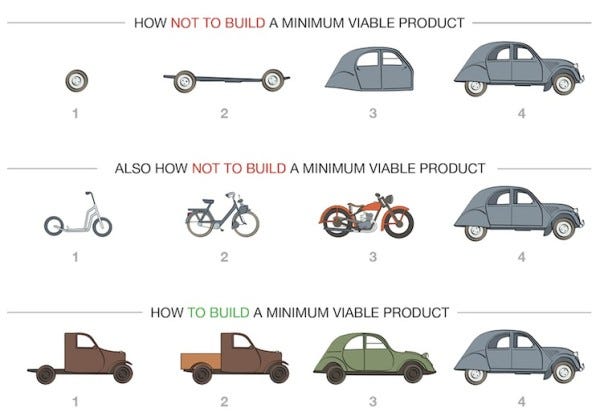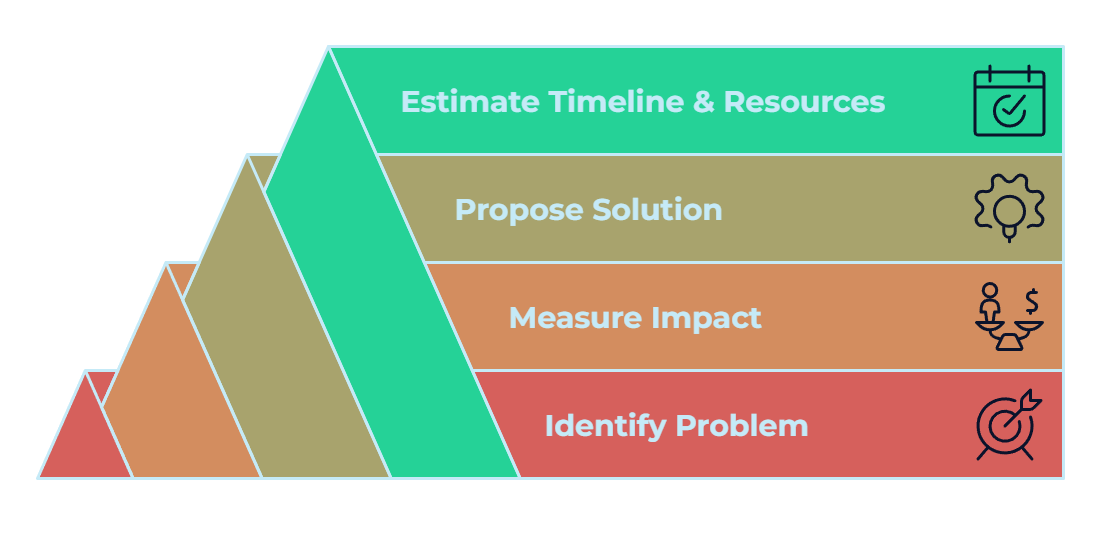# [RBM+E] Decision-making step-by-step guide.
Deep dive into decision-making process and challenges.
No more than 2 hours ago, my free post about RAPID-based Modernization should have landed in your inbox. This one is usually reserved for paid subscribers and more in-depth posts.
Let's start with a quick summary of the content.
This article outlines the essential framework for effective proposal decision-making in organizations. We had explored a structured approach that guides you from initial concept to final approval, highlighting the critical stakeholders and processes required for success.
The decision-making process follows a clear RPIAD structure:
Request Phase: Develop a minimal viable proposal (MVP) that captures essential value without excessive detail
Performer Phase: Engage key implementers to identify potential challenges and build enthusiasm
Information Phase: Gather comprehensive data through stakeholder discussions, RFIs, and external research
Acceptor Phase: Secure buy-in from those responsible for procedures and resource allocation
Decision Phase: Present final proposals to decision-makers with clear ROI and implementation plans
This framework ensures thorough evaluation while maintaining momentum toward approval. The complete guide that follows will equip you with specific tactics for each phase, ultimately culminating in our final chapter on winning proposal strategies.
For my premium subscribers, the following chapters will provide an in-depth analysis of each phase, complete with practical case studies, and expert strategies to significantly increase your proposal success rate.
The agenda for this post looks like:
The MVP (minimum viable product) is the core of any proposal
🔐Implementation roadmaps and potential challenges
🔐How to gather essential information and determine what decision-making stage you're in
🔐Navigating the approval process
🔐ROI is the ultimate deity for decision-makers - everything must demonstrate value
Let's then deep dive.
The MVP is the core of any proposal
Okay, why we don't want to have a full proposal at the start. Foremost, I mentioned this in my previous generic post - you can waste time creating it, only to discover after validation that your 30-40-50 slides need to be deleted. That's a huge waste of your time. Of course, I'm not saying your final proposal will necessarily have 50 slides, but depending on complexity, it can easily grow even to 100.
The second important factor - let's be honest - nobody wants to read your 50-page transformation manifesto. I've seen brilliant ideas die on arrival simply because they arrived wrapped in a very long document that nobody had time to digest.
This is where the MVP approach shines for proposals. Just like in product development, your minimum viable proposal focuses on the core value without drowning stakeholders in details they don't need yet.
Here's what this looks like in practice:
Instead of writing a comprehensive plan to overhaul your entire customer service department, start with a one-pager or 5–7 slides that outlines:
The single most painful problem you're solving
The measurable impact of that problem (in dollars, time, or customer satisfaction)
Your proposed solution's core mechanism
A rough timeline and resource estimate
I've worked with a client who wanted to implement a new enterprise-wide cloud governance framework. Their initial proposal was a 90-page behemoth that got stuck in review limbo for months. We scrapped it and created a 10-slide MVP proposal focused solely on a pilot program for their most critical applications. It was approved within a week.
From there, we gradually added depth to the information as needed. For example, you don't need a complete RACI matrix for each team member and each role in the initial proposal - that alone would take 20 pages to document all team roles. Instead, we concentrated on core processes and team responsibilities, fitting everything into 1–2 slides that covered the essentials. This approach kept the proposal lean while still providing the necessary information for decision-makers. Nobody on this level cares whether this work will be assigned to John or Marcin.
The beauty of the MVP approach is that it creates momentum. Once stakeholders say "yes" to your core concept, you've opened the door to expand. That initial approval acts as a powerful catalyst, transforming theoretical discussions into tangible action. Stakeholders become invested in the success of the idea they've endorsed, making them more receptive to further development and refinement. This psychological buy-in is invaluable for moving projects forward in complex organizational environments.
You can then layer in additional details as you move through the subsequent phases of the decision process. With the foundation firmly established, you can strategically introduce more sophisticated elements, address potential edge cases, and incorporate feedback. This gradual expansion allows stakeholders to digest information at a manageable pace, rather than overwhelming them with every possibility upfront. The incremental approach also creates multiple opportunities to celebrate small wins, reinforcing confidence in the overall direction while maintaining flexibility to adjust course as needed based on real-world performance data.
Remember: your goal in the Request Phase isn't to get final approval for everything - it's to get permission to move forward to the next stage. Start small, gain traction, and build from there.
Implementation roadmaps and potential challenges
Once you've secured initial buy-in with your MVP, it's time to develop a realistic implementation roadmap that acknowledges potential challenges. This is where many otherwise promising proposals fall apart – they present an idealized version of execution that crumbles when faced with organizational realities.
Keep reading with a 7-day free trial
Subscribe to Caterpillar Garden to keep reading this post and get 7 days of free access to the full post archives.





